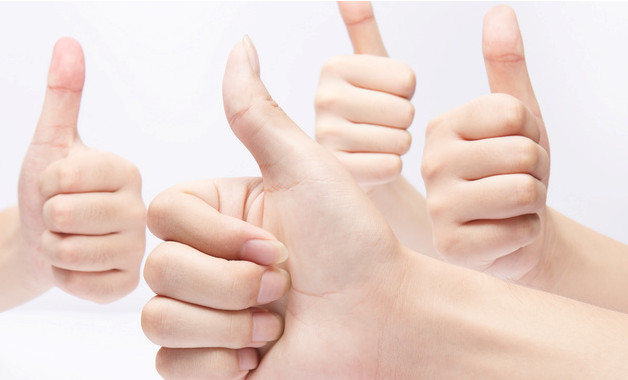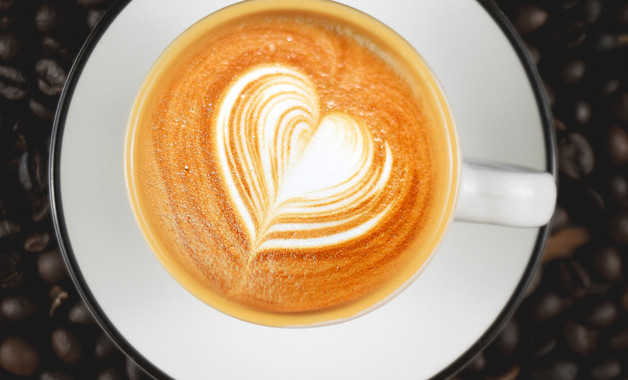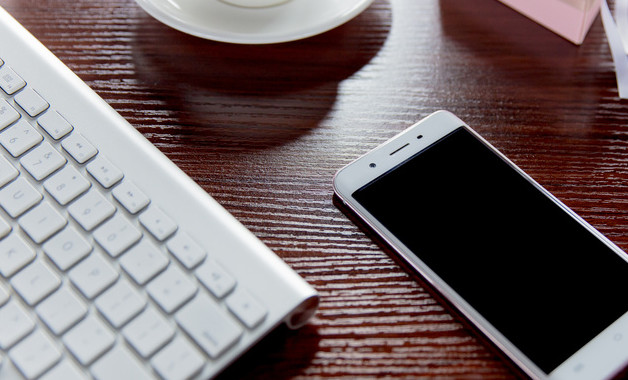- 目录

第1篇 我国世界遗产的导游词
写我国世界遗产的导游词,首先要确定自己想介绍哪一处世界遗产。这一处世界遗产最有特色的内容是什么?有什么样的著名风光、著名景点?这个景点有什么美丽的、动人的传说?以下是小编整理的我国世界遗产的导游词,欢迎阅读。
世界遗产导游词
尊敬的各位游客,我们将要游览的是颐和园。颐和园是清代皇家园林和行宫,是我园重点文物保护单位,已经列入《世界遗产名录》。游览时请大家自觉保持它的清洁。
我们首先来到的是颐和园最有名的长廊。这长廊有七百多米,共有273间。每一间的横槛上都有五彩的画。
现在我们已登上万寿山山顶,这里是欣赏颐和园全景最佳的位置。正前面的就是昆明湖,游人常说它像镜子,像碧玉。下面我们就去昆明湖边仔细欣赏。
看见湖中心那个小岛了吗?走过这个长石桥就可以去小岛上玩。请仔细看这座桥,它叫十七孔桥,桥栏杆上有上百根石柱,柱子上都雕刻着小狮子,这些小狮子姿态各异,没有哪两只是相同的。
我们现在来到的是万寿山。那个耸立在半山腰的八角宝塔形的三层建筑是佛香阁,房顶闪闪发光的是琉璃瓦。下面那些一排排金碧辉煌的宫殿,叫排云殿。
颐和园到处都有美丽的景色,我说也说不尽,请你们慢慢游赏吧!
游客们,大家好!欢迎大家来到世界遗产——黄山风景名胜区。很高兴成为大家的导游!
俗话说:“五岳归来不看山,黄山归来不看岳。”黄山以奇松、怪石、云海、温泉、冬雪“五绝”闻名中外。今天我就给大家重点介绍黄山的奇松吧。
大家请看,黄山的松树能在岩石缝中生存,生命力极强。它们形状各异,姿态万千:黑虎松、龙爪松、连理松、迎客松等很多松树都因为它们的形状而得名呢!迎客松是黄山著名的景点之一,外形更是特别:它的树干中部伸出长达7.6米的两大侧枝展向前方,恰似一位好客的主人,挥展双臂,热情欢迎海内外宾客来黄山游览,成为中华民族热情好客的象征。
黄山的奇观说也说不完,看也看不够。现在,请大家尽情去欣赏黄山的美景吧!
请大家在游玩的时候不要乱扔果皮和和食品包装袋,不要到危险的地方去。
祝大家玩得愉快!
世界遗产的导游词
各位游客,大家好,很荣幸当今天的导游。今天,我带大家去观赏我国鼎鼎有名的长城。
长城是由城关、城墙、敌台、烽火台等构成的,是我国古代各民族统治集团间的军事防御工程体系。
长城是在两三千年,由各族人民反复多次修筑而成的,体现着中华民族的伟大力量和坚强意志,成为我国古代文明中的一项光辉灿烂的瑰宝。长城内外各族人民在无数次斗争和长期交往中,发生过许多可歌可泣的动人故事,吸引着历代文人墨客为它赋诗作画,在我国文学艺术宝库中,许多优美动人的篇章与画卷。
在春秋战国时期,我国古代人民就已经开始修建长城了,那个时候诸侯争霸,为了保护自己的领地不被侵犯,所以在各自边界上纷纷修筑了长城,叫做互防长城。如今,长城经过几次修整之后,基本恢复了以往的面貌,在1987年被联合国教科文组织列入《世界文化遗产名录》,而且它还是当今世界上最上的防御性城墙!遍布了我国16个地区,全长达到了10.8万里。
各位游客,现在,我们这次长城之旅就到止结束了,有时间还可以再来。
各位游客,你们好!今天我们要参观的是以前皇帝祭天的天坛。 让我们沿着当年皇帝登坛的路线开始游览。
现在我们是沿着天坛建筑的中轴线在向南行进,将要看到的就是古代皇帝祭天的圜丘坛。圜丘有两道围护墙,外方内圆,符合天圆地方的说法。
咱们继续沿着中轴线行走,面前的建筑叫做天库,它的正殿就是皇穹宇。这组建筑不仅十分精美,而且还有回音壁和三音石,这和刚才我们说的“天心石”合称天坛三大声学现象。
回音壁上只要对着墙说话,就算相隔四五十米,见不到面,都可以清晰地听到对方说话。
三音石是皇穹宇大殿正前方的三块石头,您站在石头上拍手可以听到不同次数的回音。
我们继续走进祈谷坛,祈谷坛的主体建筑就是祈年殿,祈年殿是一座极具中国特色的独特建筑。和每年的祭天一样,这里是用来祈谷的地方。
今天的观光游览就要结束了,在天坛的这段时光希望能成为您北京之游中的永恒记忆。同时也请您把天坛的祝福带给您的家人朋友。
我国世界遗产的导游词
各位游客们,我是你们的导游——章导。
今天,我要带领大家浏览世界遗产之一——长城。
现在我们的车已经行驶在去长城的路上了,请大家欣赏两旁风景如画的美丽景色。
我们现在已经来到了长城,让我来为大家讲讲关于长城的资料吧!
长始始建于春秋战国时期,历史达20xx多年,总长度达5千万米以上。今天我们所指的万里长城多指明代修建的长城,它西起甘肃的嘉峪关,东到辽宁的鸭绿江边,长635万米。大家往远处看,它像一条矫健的巨龙,越群山,经绝壁,穿草原,跨沙漠,起伏在崇山峻岭之巅。长城是一座稀世珍宝和艺术非凡的文物古迹,它像征着中华民族坚不可摧永存于世的意志和力量,是中华民族的骄傲,所有人的自豪。
请大家在活动时注意安全!
现在让我为大家讲个关于长城的故事。长城起伏盘旋,纵横飞舞,延绵万里,它的一砖一石一关一城都是古代人民工程技术和建筑艺术的结晶,是血汗与智慧的凝洁。龙化身为长城的督造,在修建最险要的'鹰飞倒仰十八蹬'时,屡建屡塌。百般无奈,寻找
童贞女子祭城。凤化身为村姑九莲自愿献身。为建长城,龙与凤再次经历生离死别。龙在九莲献祭的长城墙基下得到了象征土的玉佩。
第2篇 我国景点英文版导游词
下面几篇范文是我国的景点英文版导游词,感兴趣的不妨看看怎么写吧,欢迎阅读借鉴,希望你们喜欢。
北京故宫博物院英文导游词
hello, everyone,
we are now going to pay a visit to a place of special interest. this scenic spot is located at the center of beijing and is characterized by thousands of palatial architectures and purple walls as well as yellow glazed tile roofs- it is simply a sea of palaces. this is the world – famous wonder – the palace museum.
the palace museum has served as the royal residence during the ming and qing dynasties. it was here that a total of 24 monarchs ascended the throne and wielded power for some 500 years. the palace museum, as the most beautiful spot of interest throughout beijing, is unique for its location: to the northwest is beihai(north sea) park, famous for its white pagoda and rippling lake; to the west is the zhongnahai (central and south sea); to the east lies the the wangfujing shopping street; and to the north id jinshan park. standing in the wanchun (everlasting spring) pavilion at the top of jingshan(charcoal hill) park, you overlook the skyline of the palace museum. at the southern end of the palace is tian` anmen (gate of heavenly peace) and the famous square named after it . this is the symbol of the people` s republic of china.
a world-famous historical site, the palace museum is on the world heritage list of unesco and is an embodiment of oriental civilization.
the palace museum is rectangular in shape, 960 meters long from north to south and 750 meters wide from east to west, covering a space of 720,000 square meters of which 150,000 is building area . it has 9000-strong rooms in it . according to legend there are 9999.5 room-units in all .the whole compound is enclosed by a 10-meter-hign wall and is accessed through four entrances, namely, the meridian gate in the south ,the gate of military prowess in the north, donghua(eastern flowery ) gate in the north, donghua ( eastern flowery) gate in the east and xihua(western flowery ) gate in the west. on each corner there is a turret consisted of 9 roof beams, 18 pillars and 72 ridge . encircling the compound there is a 3,800-meter-long and 52 meter-wide moat, making the palace museum a self-defensive city-within-a city.
the palace museum was made a center of rule during the ming dynasty by zhun di, the fourth son of the founding emperor zhuyuanzhang. the whole complex straddles on an 8-kilometers-long central axis that stretches from yongding (forever stable) gate in the south to gulou (drum tower) in the north. prominence was given to the royal power by putting the “three main front halls” and “three back halls ”on the axis while arrange other subsidiary structure around them .the construction of the palace museum involved manpower and resources across china. for example, the bricks laid in the halls ,known as “gold brick, ” underwent complex, two –dozen processes. as the final touch ,the fired bricks were dipped in chinese wood oil. involving complicated processes and high cost, these brick are called “golden bricks.” the palace museum serves as a living embodiment of good tradition and styles unique to china` s ancient architecture. it reflects to the full the ingenuity and creativity of the chinese working people. a carefully preserved and complete group of royal residences, the palace museum is a prominent historical and tourist site.
what we are now approaching is the main entrance to the palace museum-the meridian gate, which is characterized by red walls, yellow glazed –tile roofs and upturned eaves. on top of this walls, yellow glazed-tile roofs and upturned eaves. on top of this magnificent building ,there stand five lofty halls with a main hall in the center. the main hall is roofed by multiple eaves and covers a space of 9 room-units. it is flanked by two wings on each side .the wings are square in shape ,complete with multiple and four edged eaves and pinnacles. all of these structures are connected by a colonnade. because these halls resemble a soaring bird, it was also know as wufenglou (five-phoenix tower) . inside the main hall there is a throne. drums and bells were stored in the wings. whenever the emperor presided over grand ceremonies or observed rites in the hall of upreme harmony, drums, bells and gongs would be struck to mark the occasion.
as the legend goes, the meridian gate used to be a place where condemned ranking officials would be executed. this not true. however, flogging was carried out here by the ming emperors ,if a courtier falls afoul of the emperor, he would be stripped of his court dress and flogging with a stick .at one point the punishment became so harsh that a total of 11 people died from fatal wound on a single occasion .on the other hand, this building was also used to observe important occasions like the traditional chinese lantern festival (15th day of the first lunar month). on these occasions, chinese lanterns would be hanged and sumptuous banquets would be given in honour of the whole court of ministers and other ranking officials.
upon entering the meridian gate we began our tour of the palace museum. the river foowing in front of us is known as jin shui he (golden water river) and the five marbles bridges spanning it are known as the inner golden water bridges. the on in the middle was used exclusive by the emperor and its banisters were carved with dragon and phoenix designs. the bridges flanking the imperial one were reserved for princes and other royal members. the rest were used by palatines. aside from decoration, the golden water river was also dug as precaution against fire. most of the structures within the palace museum are made of wood. what is more ,according to ancient chinese cosmology, the south is the abode of fire, so this brook was dug on the southern tip of the palace. in this way, the palace museum reflects traditional chinese culture.
this building is called the gate of supreme harmony .in the foreground stand two bronze lions. can anybody tell which is male and which is female? the one on the east playing with a ball is male, symbolizing power and universal unity. the other on the west with a cub cuddling underneath its claw is female? the one on the east playing with a ball is male, symbolizing power and universal unity. the other on the west with a cub cuddling underneath its claw is female, representing prosperity the endless succession. a layout of the palace museum is posted by the entrance . from it ,you can see that the palace museum has two main parts: the forecourt and the inner court. the three main halls constitute the mainstay of the forecourt, and it was here that the emperor announced decisions and observed rites. behind the forecourt there is the inner court, consisting of major halls and the imperial garden .it was where the emperor attended state affairs, lived and enjoyed his luxurious life. the exhibition system of the palace museum involves historical court relics and articles of ancient art and culture. the palace museum houses nearly one million articles of rare treasure, or one sixth of the total number in all of china `s museums. there are the three main halls of the palace museum, built on a triple marble terrace . since most of china `s architecture is made of wood, the buildings cannot be too tall. to gain the height of the architecture, ingenious ancient artisans built the hall on a gigantic stone terrace .it is also to this end that not a single plant was grown in the square. on stairways of triple marble terrace there are 18 bronze tripods .the verandah is flanked by bronze tortoises and cranes, which served as symbols of longevity .on the east is a sundial, an ancient timepiece. on the west there is a grain measure suggesting that the emperor was just and equitable.
in the front and on each flank ,there is a pair of gilt bronze vats (caldrons ) molded during the reign of emperor qianlong of the qing dynasty .each of these weights 2 tons and is filled with water as a precaution in the event of a fire .the structure in the very middle is the hall of supreme harmony ,also known as the throne hall. it is 64 meters in width and is 38 meters from entrance to rear. with terrace exclusive ,the hall is 26.92 meters in height and is 35.03 meters in all .covering and areaof 2,377 square meters, the hall of supreme harmony is china` s largest exiting wooden structure. the hall is supported by 6 thick ,round pillars carved in a design of coiling dragons. as the holiest place in the hall, the ceiling and colored patterns were made of the finest material available at that time. the throne was placed on a terrace and is flanked by statues of elephants, luduan (a unicorn which could travel 18,000 kilometers a day and understand all languages), cranes and incense barrels .over the throne there is the caisson ,or covered ceiling ,which consists of a coiling dragon playing with a ball in its mouth .this ball is known as xuanyuan mirror ,and was supposedly made by a chinese emperor of remote times to serve as a reminder that thee rulers to follow were his hereditary heirs. the throne is made of nanmu and painted in gold .magnificently built and luxuriously decorated ,this hall did not serve as a place in which the emperor attended to daily affairs. he used his hall for major events such as his birthday, conferral of title of empress or dispatch of generals to war.
behind the hall of supreme harmony ,there sits the hall of complete harmony. this structure is square in shape .each side is 24.15 meters. this was the place where the emperor relaxed and greeted his courtiers before proceeding to the hall of supreme harmony to observe rites. this was also the place where the emperor prepared prayers or examined seeds and sowers bef ore he attended ancestral sacrifices or participated in snowing ceremonies. a grand ceremony was also held here once every 10 years for the emperor to genealogize the royal blood. there are two sedan chairs on display in the hall. behind the hall of complete harmony ,you will see the hall of preserving harmony, which was used as a place where imperial examinations were held. the imperial examination was the hignest level of competing for meritorious appointment under the feudal system dating back to the sui dynasty. china` s last imperial examination was held in 1904 during the reign of emperor guangxu of the qing dynasty. to the rear of hall there is a marble ramp carved with cloud and dragon designs, the largest of its kind in the whole country . it is 16.57 meters in length, 3.07 meters in width, 1.7 meters thick and weighs 250 tons. it was quarried in fangshan county in suburban beijing. to bring this giant piece of stone to beijing people poured water onto the road and applied rolling blocks during the process.
we are now standing before the square of the hall of heaven purity. it served as a divide separating the forecourt from the inner court .this building is known as the gate of heavenly purity. emperor qianlong held court here. proceeding further north ,you can find three main rear halls ,i.e. the hall of heavenly purity. the hall of union and peace and palace of earthly tranquility. the hall of heavenly purity if flanked on either side by two gates named after the sun and moon .inside the enclosure there are 12 palaces and halls symbolizing constellations. all of the other buildings are centered around the palace of heavenly purity , which was meant to suggest that the monarch` s power was endowed by heaven. the empress and concubines lived in the inner court.
the hall of heavenly purity was where the emperor lived and attended to daily affairs. later the emperor moved to live in the palace of mental cultivation. looking up you can see a plaque bearing the chinese inscription “be open and above-board,” a manifesto to court struggle .behind the plaque a strongbox was stored containing a will bearing the name of the would –be royal successor. this approach of secretly selecting the next emperor was adopted by emperor yongzheng of the qing dynasty. two copies of the will were prepared .one was stashed by the emperor in person ,the other was placed inside the strong box behind the plaque. after the death of the emperor, the two copies would be compared and successor would be announced. it was in this way that emperor qianglong and others have ascended the throne.
behind the hall of heavenly purity you will see the hall of union and peace , which is indentical to the hall of complete harmony. it was there that the emperor received congratulations and tributes from imperial officials on major calender occasions , a total of 25 imperial seals are stored there. in the hall, you will see a plaque with the handwritten inscription of “we wei,” exhorting taoist doctrines.
further northward is the palace of earthly tranquillity, which once served as the living room of the empresses` . the hall was later converted into a sacrificial place .through the windowpanes on the eastern wall you can see the royal bed decorated with dragon and phoenix designs. this hall has also served as the bridal chamber of monarchs.
the gate of earthly tranquilliity leads to the imperial garden (known to westerners as qianlong` s garden ),which was used by the emperor ,the empress, and the concubines. a magnificent structure stands in the middle. it is called the qin `s an (imperial peace) hall. it is the only building in the palace museum that was built in taoist style. it served as a shrine to the taoist deity. the garden covers a space of 12,000 square meters ,and is 130 meters from east to the west and some 90 meters from north to the south. there are a dozen halls, verandahs, pavilions and waterside houses in the garden . on each of the fur corner there is a pavilion dedicated to the four seasons which is different in construction style and shape. the garden also features an imperial landscape. with rare trees and exotic rockery, the imperial garden served as a model for china` s imperial parks .in all ,a total of 10-strong building styles were applied.
the tall building we are now passing is the gate of military prowess, the back door of the palace museum. our visit is now drawing to a conclusion but the architectures of the palace are not . on the other side of the road is the 43-meter-hign charcoal hill , providing natural protection for the forbidden city. this was also an embodiment of china` s construction style-putting a pool in the front and a hill in the rear. now let` s climb up to wanchun (everlasting springs ) pavillion where we` ll have a great view of the palace museum.
北京天安门英文导游词
tian’anmen( the gate of heavenly peace), is located in the center of beijing. it was first built in 1417 and named chengtianmen( the gate of heavenly succession). at the end of the ming dynasty, it was seriously damaged by war. when it was rebuilt under the qing in 1651, it was renamed tian’anmen, and served as the main entrance to the imperial city, the administrative and residential quarters for court officials and retainers. the southern sections of the imperial city wall still stand on both sides of the gate. the tower at the top of the gate is nine-room wide and five –room deep. according to the book of changes, the two numbers nine and five, when combined, symbolize the supreme status of a sovereign.
during the ming and qing dynasties, tian’anmen was the place where state ceremonies took place. the most important one of them was the issuing of imperial edicts, which followed these steps:
1) the minister of rites would receive the edict in taihedian( hall of supreme harmony), where the emperor was holding his court. the minister would then carry the decree on a yunpan( tray of cloud), and withdraw from the hall via taihemen( gate of supreme harmony)
2) the minister would put the tray in a miniature longting( dragon pavilion). beneath a yellow umbrella and carry it via wumen( meridian gate), to tian’anmen gate tower.
3) a courtier would be invested to proclaim the edict. the civil and military officials lining both sides of the gateway beneath the tower would prostrate themselves in the direction of the emperor in waiting for the decree to the proclaimed.
4) the courtier would then put the edict in a phoenix-shaped wooden box and lower it from the tower by means of a silk cord. the document would finally be carried in a similar tray of cloud under a yellow umbrella to the ministry of rites.
5) the edict, copied on yellow paper, would be made known to the whole country.
such a process was historically recorded as “ imperial edict issued by golden phoenix”.
during the ming and qing dynasties tian’anmen was the most important passage. it was this gate that the emperor and his retinue would go through on their way to the altars for ritual and religious activities.
on the westside of tian’anmen stands zhongshanpark( dr. sun yat-sen’s park), and on the east side, the working people’s cultural palave. the park was formerly called shejitan( altar of land and grain), built in 1420 for offering sacrificial items to the god of land. it was opened to the public as a park in 1914 and its name was changed in 1928 to the present one in memory of the great pioneer of the chinese democratic revolution.
the working people’s cultural palace used to be taimiao( the supreme ancestral temple), where tablets of the deceased dynastic rulers were kept.
the stream in front of tian’anmen is called waijinshuihe( outer golden river),with seven marble bridges spanning over it . of these seven bridges,historical records say the middle one was for the exclusive use of the emperor and was accordingly called yuluqiao( imperial bridge). the bridges flanking it on either side were meant for the members of the royal family and were therefore called wanggongqiao( royal’s bridges). farther away on each side of the two were bridges for officials ranking above the third order and were named pinjiqiao( ministerial bridges). the remaining two bridges were for the use by the retinue below the third order and wre called gongshengqiao( common bridges). they anr the one in front of the supreme ancestral temple to the east and the one in front of the altar of land and grain to the west.
the two stone lions by the gate of tian’anmen, one on each side were meant as sentries. they gaze toward the middle axis, guarding the emperor’s walkway. in front of the gate stands a pair of marble columns called huabiao. they are elaborately cut in bas-relief following the pattern of a legendary dragon. behind the gate stands another pair of similar columns. the story of huabiao may be traced to a couple of sources. one of the versions accredits its invention to one of the chinese sage kings named yao, who was said to have set up a wooden pillar in order to allow the ordinary people to expose evil-doers, hence it was originally called a slander pillar. later it ws reduced to a signpost, and now it serves as an ornament.
the beast sitting on the top of the column is called” hou”, a legendary animal, which is said to have been a watcher of an emperor’s behaviour. he was doing such duties as warning the emperor against staying too long outside the palace or indulging in pleasure and urging him to go to the people for their complaints or return in due time. therefore, the two pairs of beasts were given the names” wangjunhui”( expecting the emperor’s coming back) and “ wangjunchu”( expecting the emperor’s going out) respectinvely.
in the old days, tian’anmen, as a part of the imperial city, was meant for important occasions. the two rows of chaofang( antechamber), on the sides behind the main gate, wre reserved for civil and military members of the government waiting for imperial audience and in front of the gate, were offices of imperial administration.
on october 1, 1949, chairman mao zedong proclaimed on tian’anmen rostrum the founding of the people’s republic of china. since then tian’anmen has been the symbol of new chinea. chairman mao’s portrait is hung above the central entrance, flanked by two slogans:” long live the great unity of the peoples of the world”. today , the splendour of tian’anmen attracts million of visitors from all over the world. the rostrum on its top was opened in 1988 to the public for the first time in its history. it offers a panoramic view of the square and the city proper.
tian’anmen square
situated due south of tian’anmen, the square has an area of 44 hectares( 109 acres) that can accommodate as many as one million people for public gatherings. it has witnessed may historical events in china’s modern history and is a place for celebrations on such festive days as international labour day on may 1st and national day on october 1st.
around the square are several famous buildings:
1 the great hall of the people
this is one of the largest congressional buildings in the world. built in 1959, the hall consists of three parts: a 10,000-seat auditorium in the center, a banquet hall in the north wing facing chang’an street, with a seating capacity of 5,000, and offices for the standing committee of the national peoples’ congress of china in the south. in addition, thirty-four reception chambers are named after various provinces, autonomous regions and municipalities directly unde the central government, plus hong kong and macao. each is different from the other in decoration and furnishings to stress their local features.
2 the museum of chinese history and the museum of the chinese revolution
these two museums were also built in 1959. the museum of chinese history houses a permanent exhibition in four parts, covering the entire process of chinese history spanning from 1.7 million years ago to 1919:
1) the primitive society( 1.7 million years ago to the 21st century bc);
2) the slave society(21st century bc to 476 bc.);
3) the feudal society(475 bc. to 1840 ad.);
4) the semi-colonial and semi- fedual society(1840 to 1919.)
the museum of the chinese revolution covers the period from 1919 to 1949.
3 the monument to the people’s heroes
the monument was built in memory of thousands of martyrs who died for the revolutionary cause of the chinese people. its construction began on august 1, 1952 and was not completed until 1958. in the form of an obelisk, the monument as made of more than 17,000 pieces of tranite and white marble. the purple piece inlaid in the front of the monument was brought from qingdao, shandong province. it is 38 meters(124ft 8 in) high, the loftiest of its kind ever seen in the country. not only is it an historic memorial for immortal heroes, but also it is an artistic work of excellent architectural value.
on the front side of the monument is an engraved inscription in chinese characters written by chairman mao zedong, which reads” eternal glory to the people’s heroes!”. on the back of the monument is an article written by chairman mao, but in chinese calligraphy by the late premier zhou enlai.
at the top of the monument are eight gigantic carved wreathes of such flowers as peony, lotus and chrysanthemum, symbolizing nobility, purity, and fortitude. at the base of the monument are eight marble reliefs depicting the chinese historic events since 1840. they are:
1) the burning of opium in 1840:
2) the uprising of 1851 in jintian, guangxi;
3) the revolution of 1911;
4) the may fourth movement of 1919;
5) the may 30th movement of 1925;
6) the uprising of 1927 in nanchang, jiangxi;
7) the war of resistance against japanese aggression from 1937 to 1945;
8) the victorious crossing over the yangtze river by the peoples’s liberation army in 1949. this relief is flanked by two smaller ones—“ supplying the front” and “ greeting the p.l.a.”.
4 chairman mao’s mausoleum
chairman mao zedong, the founder of the people’s pepublic of china, passed away on sepember 9, 1976. in commemoration of this great man, a mausoleum began to be constructed in november 1976, and was completes in august the following year. the mausoleum was officially opened on september 9, 1977.
the mausoleum is surrounded by four groups of sculpture. east of the northern entrance is the sculpture depicting the period of the new democratic revolution( 1919-1949), and west of it is the one signifying the great achievements of the chinese people during the period of slcialist revolution and construction since 1949. the sculptures in front of the southern gate are figures of workers, peasants soldiers, intellectuals, technicians and children.
inside the mausoleum are three main sections: a white marble statue of chairman mao is mounted on a platform in the front lobby. on the wall behind the statue is a 24-metre-long( 79-foot-long) tapestry, a fine needlepoint work with beautiful landscapes of the country.
in the main hall there is a crystal coffin, in which chairman mao’s body lies stately with the communist party’s flag covering over him.
on the wall of the southern lobby, a poem by chairman mao and in his own calligraphy is inscribed in gold inlay. it expresses his full great expectations for the country.
tian’ anmen square has now completed its renovation after eight months’ hard work to welcome the 50th anniversary of the people’s republic in 1999.
河源苏家围英文导游词
the sujiawei hakka village tourism zone is a must for tourists who are interested in the hakka culture and customs.
bordering dongjiang river in the north and jiushe river in the south, the village is located in the heshui township, 26km away from the city of heyuan.
today the village is described as a “picturesque village in south china”, featuring old trees and houses, wild lands, bamboos and fresh air. also it has a profound cultural history and is said to be the habitat of descendants of su shi, who also known as su dongpo, a famous chinese literate in northern song dynasty. hence all people living in the village now are surnamed “su”.
it also provides some performances for travelers to get a better known of hakka culture such as their wedding customs. you can take part in the producing lines of making bean curd, wine or oil; or enjoy yourself in activities like fishing, swimming and boating.
the first spot we encounter is the yingqing bridge, where has a panoramic view of sujiawei. the bridge is a place to welcome all families, relatives and friends.
here is purple perilla park. the purple perilla can be used as medicine to cure cold, or purple dye or cooking. the origin of this park is as follows: one day one of su shi’s offspring passed by this place, he dreamed five old men pointed a big tree and told him it is perilla tree. when he woke up, he found this place is full of perilla, and the environment is quite beautiful, so he thought the old men would like he move the su clan here. so after he came back, he always mentioned this dream to his late generations. to fulfill his this dream, over 700 years ago, the su clan moved here and sujiawei started its story.
from this purple perilla park to pool lips estate, is gallery of hakka villages gender culture, which shows the hakka people’s moral ideas and customs, they think everything has two opposite extremes like negative and positive. in hakka dialect, have a boy baby is named “tian deng”, the same pronunciation as “add a lantern”. so in chinese lantern festival, any family which has a new boy baby will hang a big lantern in their ancestors’ shrine.
later we will visit sugong shrine yongsi hall, guanghua hall, su school and yi jiang temple. you may find the hakka architecture is well preserved here. these ancient buildings are square flat houses with dark blue bricks and roof tiles that belong to the style of the ming and qing dynasties. the oldest house, yongsi hall, was built in 1481 in memory of su dongshan, the eighth-generation descendant of su dongpo and as a place for the villagers to worship their ancestors and discuss important affairs.
now we walk along the dongjiang river and enjoy the hakka folk music. at the riverside you see bamboo everywhere. su dongpo loved bamboo, he once said “i can eat without meat, but i can not live without bamboo. no meat to eat only makes me thin; but live without bamboo makes me vulgar”!
walking so long time, are you a bit tired and thirsty? let’s go to her workshops to taste hakka traditional snacks and tea. there are tea leaf, sesame, peanut, red jujube and longan in the tea. do you taste them?
ok, after a break, we go to experience traditional hakka wedding performance. if you are lucky to be chosen and act as the bridegroom, you will be invited to the stage and join their show.
the village also preserves many slogans printed on the walls during 1950s to 1970s, which are silent witnesses to chinese modern history.
do you see the big bamboo hats holding by bamboo sticks in line? it is farm four seasons gallery. on the bamboo hats marked farming planting and harvesting dates and festivals.
finally we have 15-minutes free activity in the countryside vegetable fields. you may like farmers to pick fruits, vegetables you like in the fields.
第3篇 我国世界遗产导游词作文200字
我国世界遗产导游词作文200字
我国世界遗产导游词作文200字
各位游客大家好,我叫庄乐萱,大家可以叫我庄导游。欢迎大家来到利津欧式一条街,现在让我来给你们介绍一下吧!
这里有各种各样的商店,商品种类齐全,物美价廉,售货员服务态度好,人们也非常喜欢来这里购物消遣。
每当夜晚时,路旁的彩灯就闪烁着美丽的光芒。再看看马路上人山人海,欢声笑语不断传来,热闹极了。
中午,街上的景色非常秀丽。这时的路灯排着整齐的队伍一动不动地站在那儿,像一个个战士挺胸而出,道路两旁的国槐像一把把绿荫大伞,为人们遮挡阳光。
现在,我介绍完了,请大家尽情地玩耍和购物吧。祝大家玩得愉快!
我国世界遗产导游词作文200字
大家好,我很高兴担任大家的导游,今天就让我来为你们讲解吧。
我们的利津县又称凤凰城,还有一个美丽的传说:从前有一群美丽的凤凰在这里栖息,所以这里便有了风水宝地凤凰城之说。
现在我们到了凤凰广场的正门了。我们往前走一走,便见一个大凤凰正在振翅欲飞,那便是利津的标志,那凤凰高达126米。我们再往前走,便有八根雕龙浮凤柱。再往前走你就会看见一个大正方形的喷泉,开始的时候,这里就有很多的人观看。往西走,就有很大一片树林,长在小山上。秋天枫叶火红一片。
现在大家尽情地玩吧,祝大家玩得快乐!
我国世界遗产导游词作文200字
各位贵宾,各位朋友:
大家早上好,很高兴认识大家,并由我陪同大家去我国的著名历史文化名城和旅游胜地——苏州观赏园林,到人间天堂去享受一天。
在车到景点之前,我先为大家介绍苏州园林的基本情况。“上有天堂,下有苏杭。”苏州为典型的江南水乡城市,素有“东方威尼斯”之美誉。当然,也请大家注意环境卫生,做一个文明游客。
我们马上到了今日黄金游的第一站——留园。好,留园到了。留园位于苏州市园林路。它应用了分合,明暗等对比手法。大家好好观赏吧!
留园不留我们,那我们就去狮子林吧!狮子林到了,你们跟我来,狮子林变幻莫测,值得一览。
穿过狮子林,出去约5千米,可见寒山寺,要不现在大家休息一会儿吧。说到寒山寺,大家自然会想起“姑苏城外寒山寺,夜半钟声到客船”的诗句吧!因唐初有个叫寒山的和尚未在这里住过而得名。现在寺内存碑一方,上刻张继写的《枫桥夜泊》一诗。
告别寒山寺,大家还恋恋不舍。希望它能给你们留下一个美好的回忆。
各位朋友,今天我们在人间天堂——苏州度过了美好的一天。谢谢各位!愿大家旅途平安愉快,再见!
我国世界遗产导游词作文200字
游客们,大家好!欢迎大家来到世界遗产——黄山风景名胜区。很高兴成为大家的导游!我叫阮铄腾,大家叫我阮导好了。
俗话说:“五岳归来不看山,黄山归来不看岳。”黄山以奇松、怪石、云海、温泉、冬雪“五绝”闻名中外。今天我就给大家重点介绍黄山的奇松吧。
大家请看,黄山的松树能在岩石缝中生存,生命力极强。它们形状各异,姿态万千:黑虎松、龙爪松、连理松、迎客松等很多松树都因为它们的.形状而得名呢!迎客松是黄山著名的景点之一,外形更是特别:它的树干中部伸出长达7.6米的两大侧枝展向前方,恰似一位好客的主人,挥展双臂,热情欢迎海内外宾客来黄山游览,成为中华民族热情好客的象征。等会儿我们还可以在那儿尽情拍照,作为纪念。
黄山的奇观说也说不完,看也看不够。现在,请大家尽情去欣赏黄山的美景吧!
请大家在游玩的时候不要乱扔果皮和和食品包装袋,不要到危险的地方去。
祝大家玩得愉快!
第4篇 我国世界遗产导游词作文400字
我国世界遗产导游词作文400字
我国世界遗产导游词作文400字
朋友们好!我是高思淼,你们叫我小高吧!今天我们来游览秦兵马俑博物馆。记住游览时请要保持卫生,不要用闪光摄像头照相。
秦兵马俑至今已挖掘五个俑坑,秦兵马俑的发现人是杨新平,他是在一次打井时发现的。因刚拿出来受到阳光的强烈照射,所以变了颜色。
我们先游览五号坑。看!那面积多大!差不多有13个篮球场那么大。兵马俑排列也很合理。外圈的两排士兵作为守护、近杀;在里一圈的骑兵俑也有守护作用;最里头的弩兵俑在中间向敌人发箭……这样发挥了兵马俑最大优势。
接着是四号坑,四号坑兵马稀少,好像是军阵后方的守卫兵。
三号坑兵马排列相似五号坑,可有五个将军俑让人惊叹:第一个将军俑右腿跪于地面,两手动作握着宝剑。第三、四哥也是分别左右腿跪于地面,但手是拔出剑的。第五个从左面看是陕西地图的样子,好像表达了它生(生长)在陕西,战(战争)在陕西。看我这记性,都忘了告你们兵马俑在什么地方了:兵马俑位于中国陕西西安临潼,或者你们是外星人,我就要说的是:太阳系地球中国陕西西安。行了,开个玩笑。
咱们二号坑就简单看看……
一号坑在五个坑里最大,面积为一万四千二百六十平方米。大家发现所有的兵马俑都身材魁梧。
这次旅行快乐吗?有意见提出,因为我是新导游。
我国世界遗产导游词作文400字
游客们,大家好!欢迎大家来到世界遗产——黄山风景名胜区。很高兴成为大家的'导游!我叫阮铄腾,大家叫我阮导好了。
俗话说:“五岳归来不看山,黄山归来不看岳。”黄山以奇松、怪石、云海、温泉、冬雪“五绝”闻名中外。今天我就给大家重点介绍黄山的奇松吧。
大家请看,黄山的松树能在岩石缝中生存,生命力极强。它们形状各异,姿态万千:黑虎松、龙爪松、连理松、迎客松等很多松树都因为它们的形状而得名呢!迎客松是黄山著名的景点之一,外形更是特别:它的树干中部伸出长达7.6米的两大侧枝展向前方,恰似一位好客的主人,挥展双臂,热情欢迎海内外宾客来黄山游览,成为中华民族热情好客的象征。等会儿我们还可以在那儿尽情拍照,作为纪念。
黄山的奇观说也说不完,看也看不够。现在,请大家尽情去欣赏黄山的美景吧!
请大家在游玩的时候不要乱扔果皮和和食品包装袋,不要到危险的地方去。
祝大家玩得愉快!
我国世界遗产导游词作文400字
大家好!我是一名小小导游。大家都知道吧,我国历史悠久,自然风光秀丽多姿。今天,我就带你们去游览九寨沟。
九寨沟位于四川省南坪县境内,是一个中外闻名的自然风景区。九寨沟的秀峰挺立,山谷幽静,湖泊棋布,河流纵横,道道瀑布点缀其间,是一个景物奇异、风光秀丽的佳境。有“人间仙境”“九寨风光胜桂林”的美称。
游客们,我们顺着林阴小道向上走去,一会儿就到诺日朗瀑布!你们看,这瀑布怎么样?白花花的流水从树丛中飞流出来,好像银河奔泻,抛珠撒玉,声震幽谷,映出彩虹。这里四季景色各异。春天花朵点缀水面,夏天浓荫遮盖水层,秋天枫叶野果为水添色,冬天,玉树琼枝倒挂水边。
前面就是九寨沟的湖泊。大家跟着我去游览九寨沟的湖泊。九寨沟的湖泊是非常美丽的。它像一面镜子镶嵌在深山峡谷中,湖水清澈透明,放眼望去,水的颜色由浅处的天蓝色,变为较深处的墨绿色。水面上鸳鸯、野鸭和翠鸟双双结伴,水中游鱼清晰可见,历历可数。清水随风荡漾,远看好像水波仙子在翩翩起舞。
你们真有眼福啊,看,那些就是国家一级保护动物——金丝猴。金丝猴全身毛色金黄,背毛很长,宛如肩披一件金色的蓑衣,鼻子向前翘着。它爪子很尖,有一条长长的尾巴。从远处看,像一个威武的卫士,在守护着九寨沟。
游客们,这里还有很多美景,现在就在此解散,你们可以拍照,还可以漫步欣赏了!请大家注意安全,保护生态环境。
第5篇 我国世界文化遗产导游词长城篇
女士们!先生们!大家下午好!我是导游李志贤,今年九岁了。大家都叫我小李就行了。
欢迎大家来到长城玩!你们知道长城为什么是世界遗产吗?这是因为,长城的一块石头就有两三百斤重。那时,还没有起重机,全部依靠乡亲们无数个肩膀和无数双手,这才成了今天的世界遗产。
长城,经过无数次重修。你们知道长城的传说吗?我给大家说一个吧!
相传,有两家人种西瓜。一天,西瓜成熟了,发现有一个特别大的西瓜,打开一看,里面竟然是个小女孩。他们两家给她取名为:孟姜女。
孟姜女长大后,找了丈夫。一天,官兵来了,把她丈夫抓走去修长城了。
几年后,她丈夫死了。孟姜女很伤心,就去长城边找她丈夫。她边找边哭,长城都被她哭倒了。
长城,还有很大的防御能力。但是,秦始皇却害死了许多无辜的老百姓,让老百姓人心惶惶,这样,秦国最终灭亡了。
好了,长城到了,大家可以下车仔细浏览我们的万里长城了!











